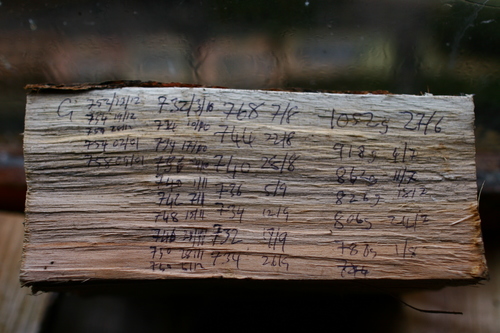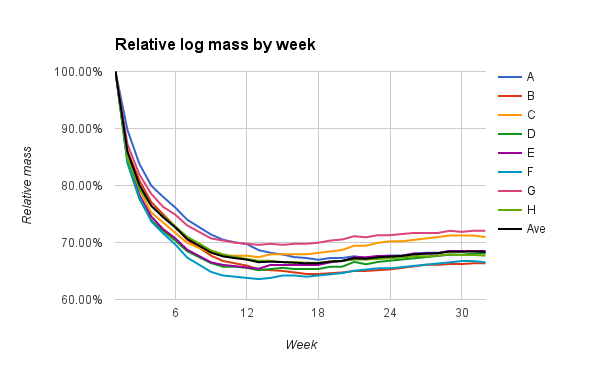On drying logs in a shed
I have sometimes wondered how long I need to leave sawn and chopped logs in my shed before I should burn them in my rather nice Clearview log stove. Rather than going to the trouble of buying a moisture meter, I have devised a simple log weighing experiment. I expect that if the log stops losing mass, then it is dry enough to burn.
Method
- Select a small number (8) of logs as the experimental sample.
- Take weekly measurements of the mass of each log using digital kitchen scales with a resolution of 2g.
- Record the mass and date on each log to help prevent transcription errors
- Collate results in a Google Spreadsheet

Sample
I got some freshly cut willow logs in June 2015. Some were sawn and chopped in June (Sample A), some more in September (Sample B). I selected 8 logs of different sizes from each batch. The logs are not required for burning in the 2015-2016 winter, so I plan to continue the measurements until winter 2016.
Results
As of February 2016, the measurements are on-going so I can only present findings to date.
| Sample A | Sample B | |
|---|---|---|
| Start Mass | 9194g | 9202g |
| Current Mass | 6284g | 7456g |
| % of start mass | 68.4% | 81.03% |
The full table of data and graphs are stored in Google Drive.

Observations
- Logs contain a lot of water. If you have 100kg of fresh logs in your shed, that may be around 35 litres of water
- When you fill a shed with fresh logs, you can expect a significant volume of water condensing on the roof. Perhaps it makes more sense to dry logs outside first if you have the space
- Logs put on mass when the weather is not very warm, get your logs in the shed by April if you need to use them next winter
- I want to keep tracking this set of logs to see if they lose a significant mass of water on their second summer in the shed.

